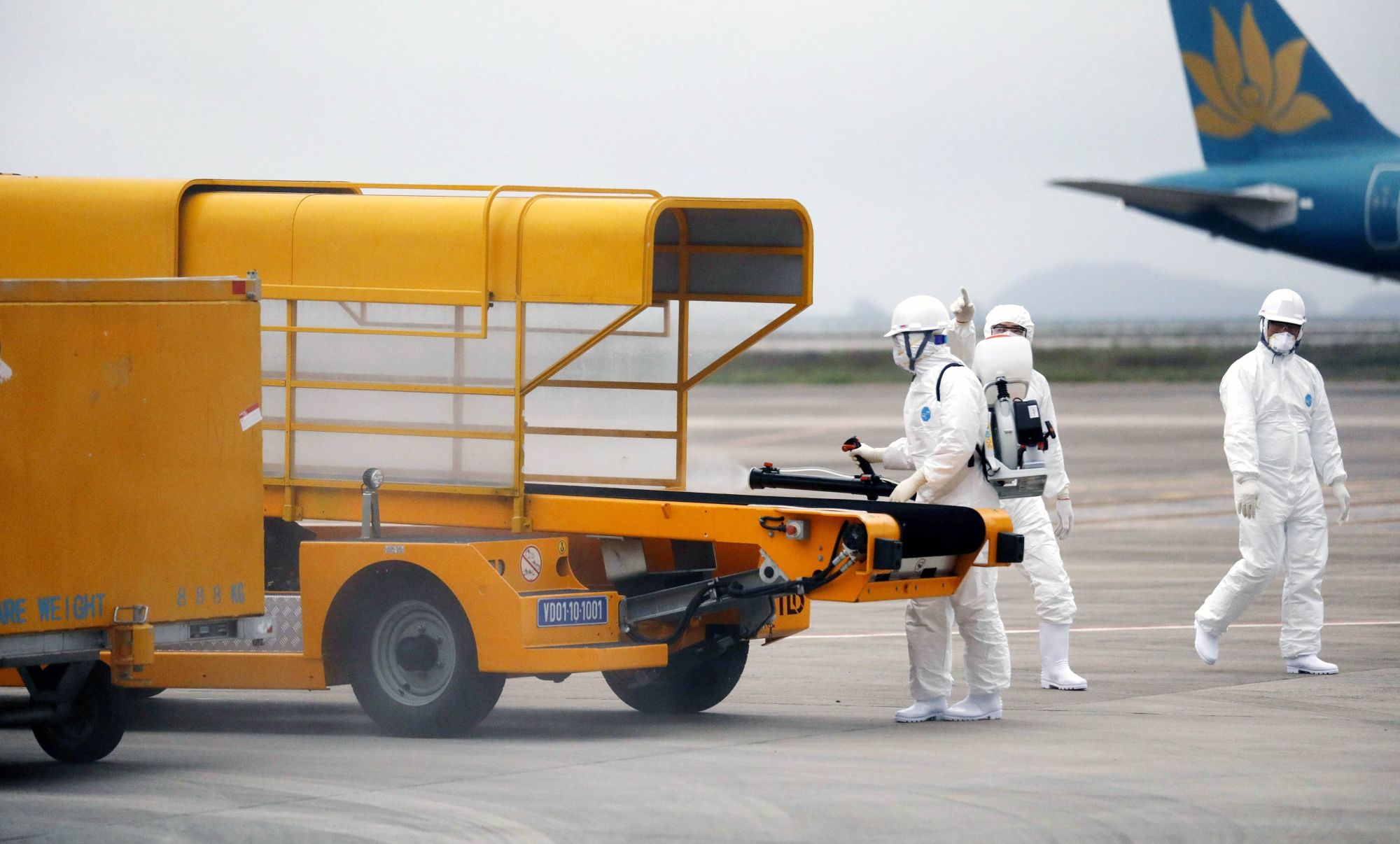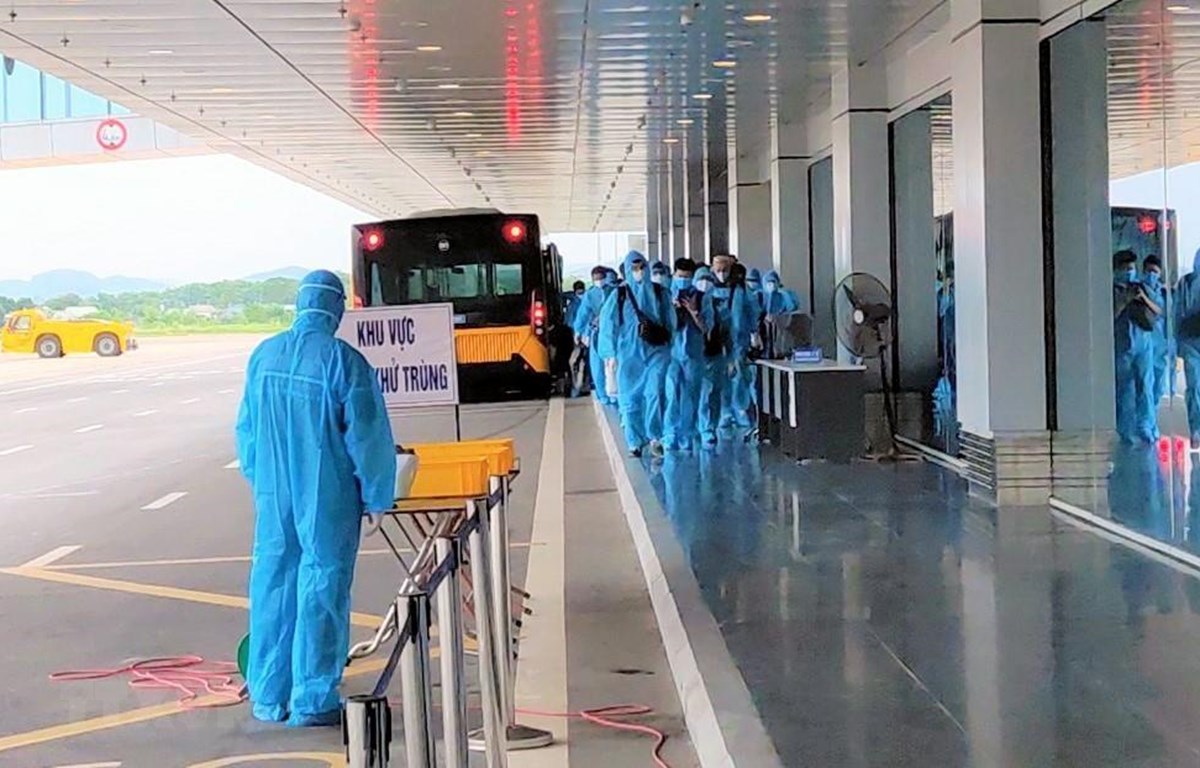In the middle of the night of the Lunar New Year, aboard a flight just landing at the Van Don International Airport in the northern coastal province of Quang Ninh was a group of Vietnamese expatriates hiding their smiles behind facemasks, filled with happiness and hope.
Recalling this special moment, Ngo Manh Quy, head of health quarantine at the airport, said the memory brought back an indescribable feeling, a mix of astonishment, joy and anxiety.
Rescuing from dusk till dawn
Working at the airport since it was established, however, the past three months of receiving flights carrying Vietnamese citizens from COVID-19-hit areas home was the hardest time Quy and his colleagues had been through. The pride in their country and affection for their countrymen, however, surpassed their tiredness.

Quy said he had not come home for more than two months due to his work and associated quarantine period. “More and more flights come, making my 14-day quarantine session longer. At the airport, we don’t have fixed working hours, it might be dusk or dawn. There were days we worked 12-hours straight,” he said.
Flights kept arriving following the COVID-19 outbreak in China, spreading the virus all over the world.
The pride in their country and affection for their countrymen, however, surpassed their tiredness.
The most significant flight to Quy landed on February 1. He received information on the flight just 30 minutes before the landing. The flight from China destined for Hanoi’s Noi Bai international airport had changed its direction to Van Don.
It was just Quy and his colleague Nguyen Tien Vuong in charge of the quarantine work that day. They rushed to complete the preparation at nearly 9 pm, and the checking of all passengers and crewmembers was completed at dawn.
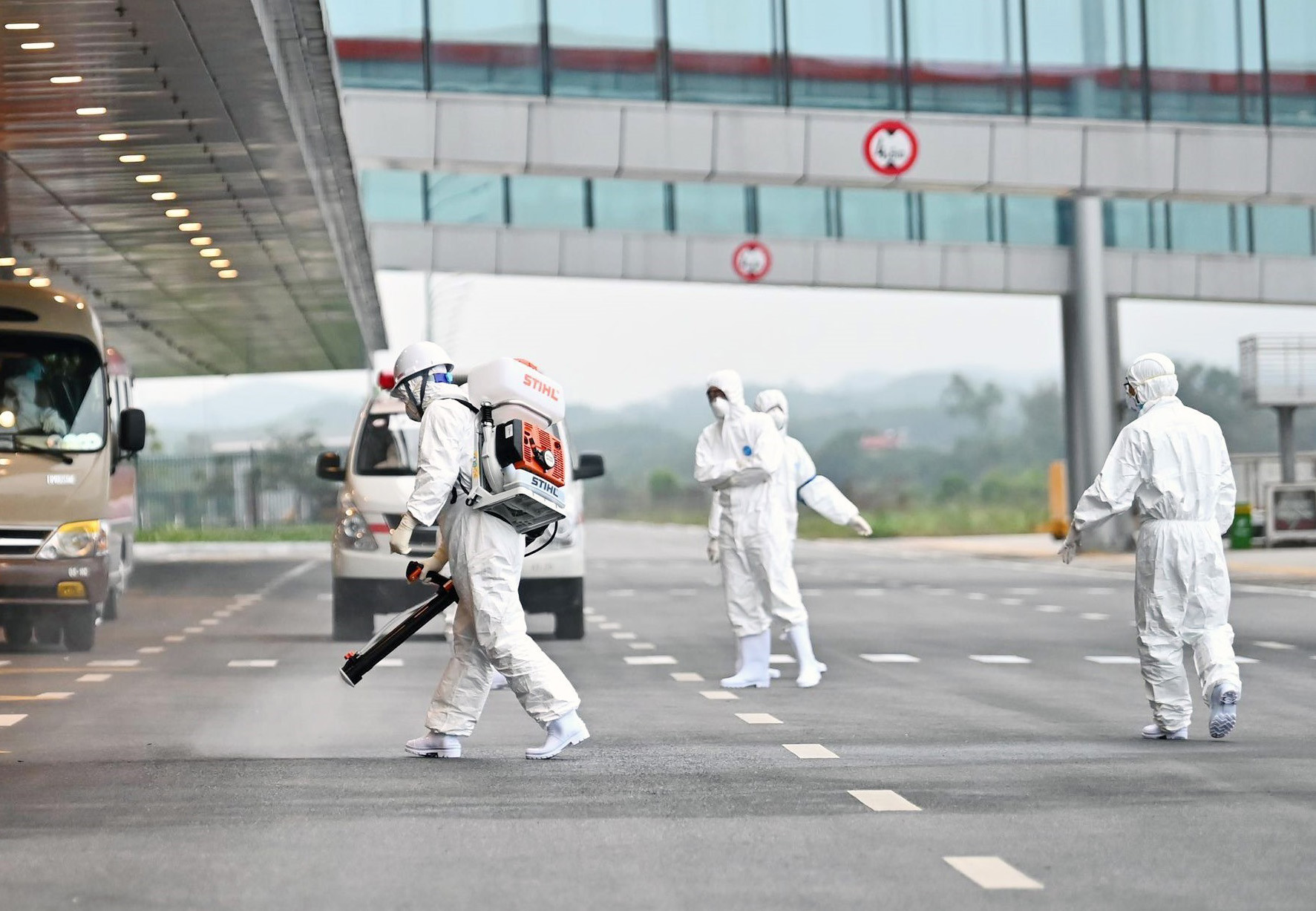
It was almost 3 am the following day before they could finally remove their protective clothing.
The two men continued to sterilise the airport and safely incinerating waste as all passengers boarded buses heading to quarantine sites. It was almost 3 am the following day before they could finally remove their protective clothing.
This was also the first flight to Vietnam from the centre of the pandemic, marking the beginning of the rescue processes that would be applied nationwide.
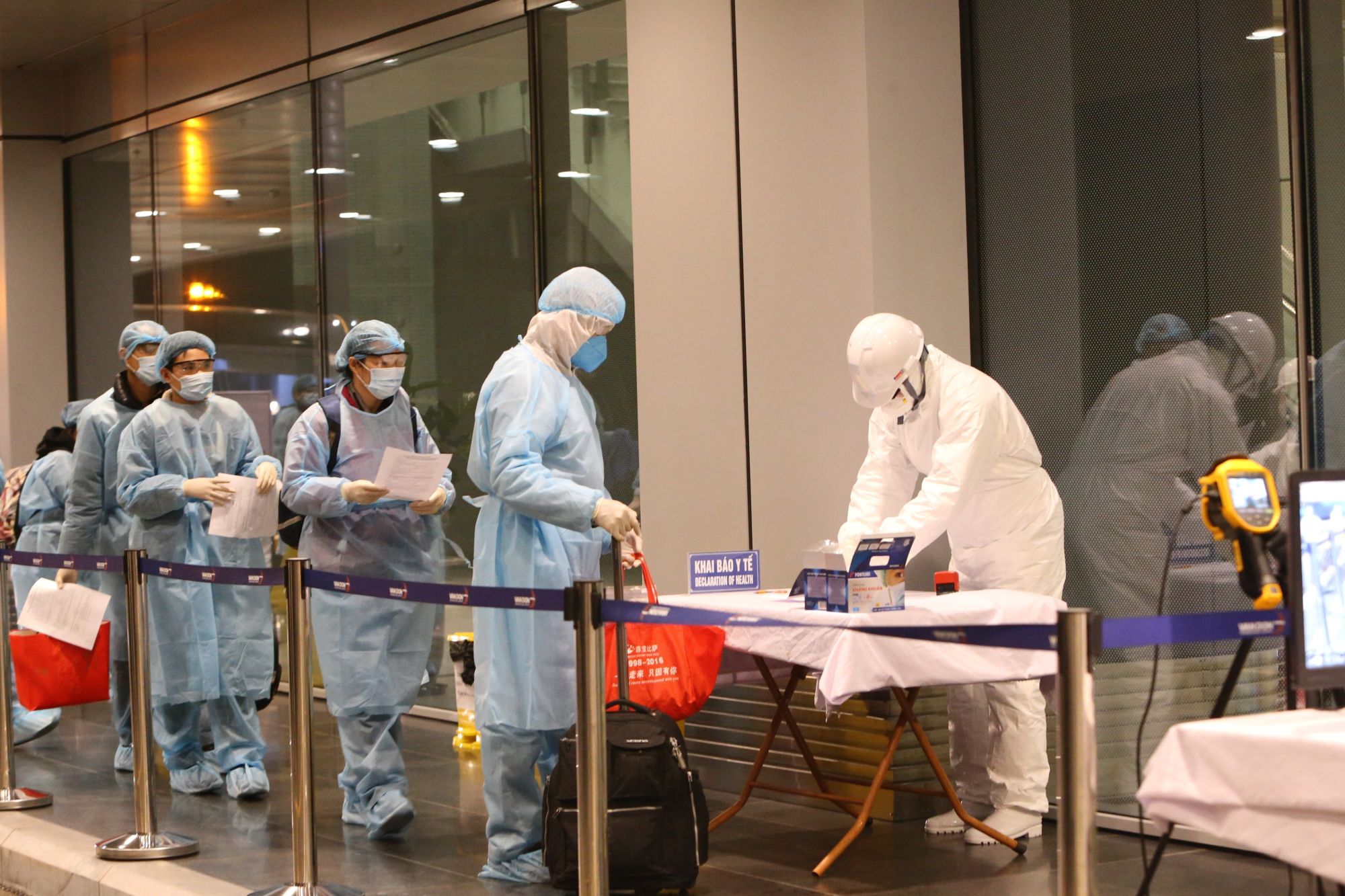
Reducing chance of risks to zero percent
A meeting took place the next day to review the work and put forth a standard process for disease prevention and control and for coordination among relevant units.
Pham Ngoc Sau, director of the airport, said this was not his first time joining a campaign related to communicable diseases, but this time he held a great responsibility as there was no aviation process for receiving flights from COVID-19-hit locations.
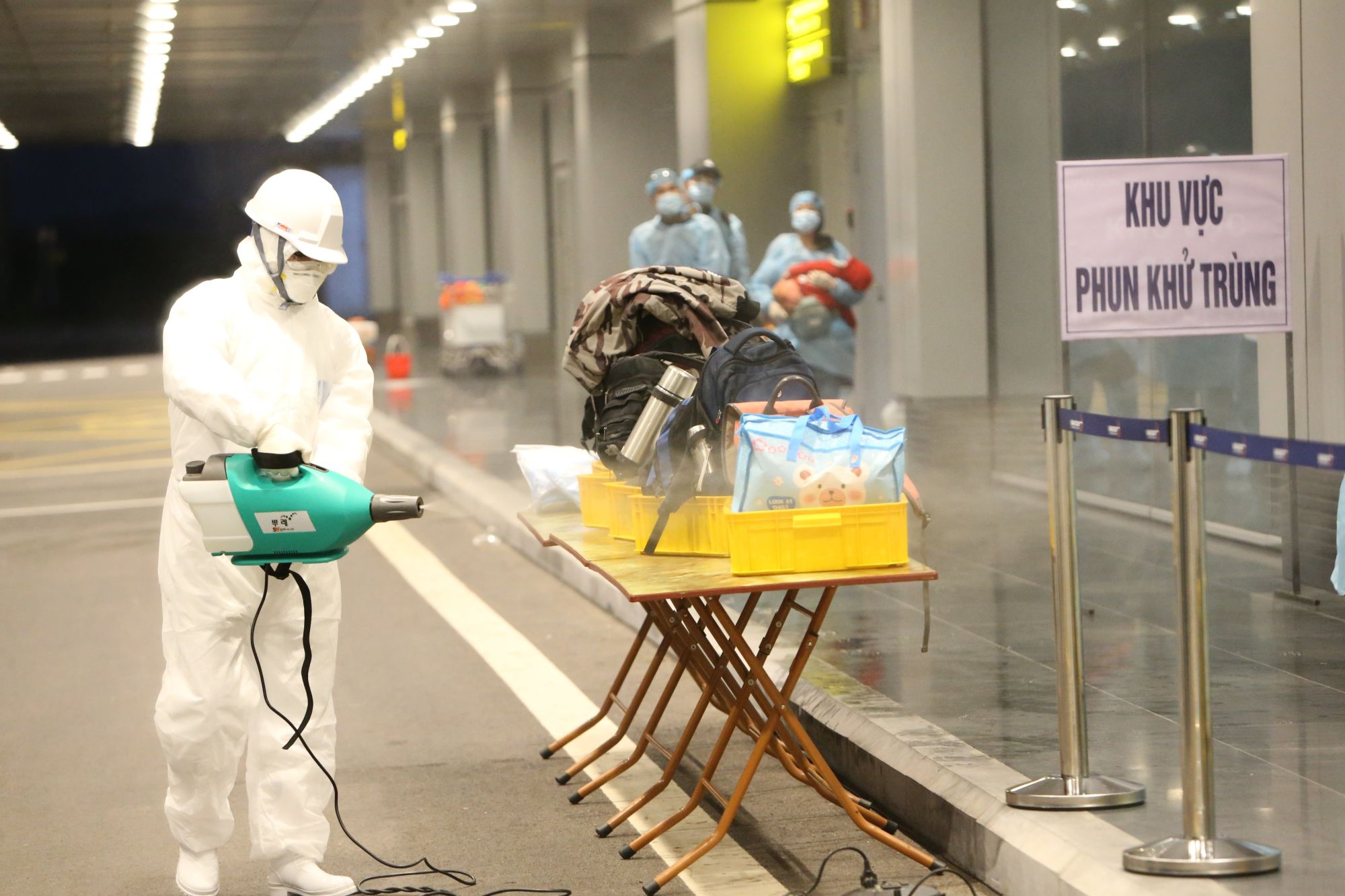
Sau said that not many airports could do what Van Don does, as the airport receives the passengers outdoors rather than at its terminals to minimise the risk of infection. After all of the procedures are finished, the passengers are immediately taken to the quarantine facilities.
According to Dao Van Vu, deputy chairman of the Van Don district People’s Committee, as of February 1, 29 rescue flights have landed in Van Don airport carrying 4,400 Vietnamese citizens. To date, the airport has recorded no infection.
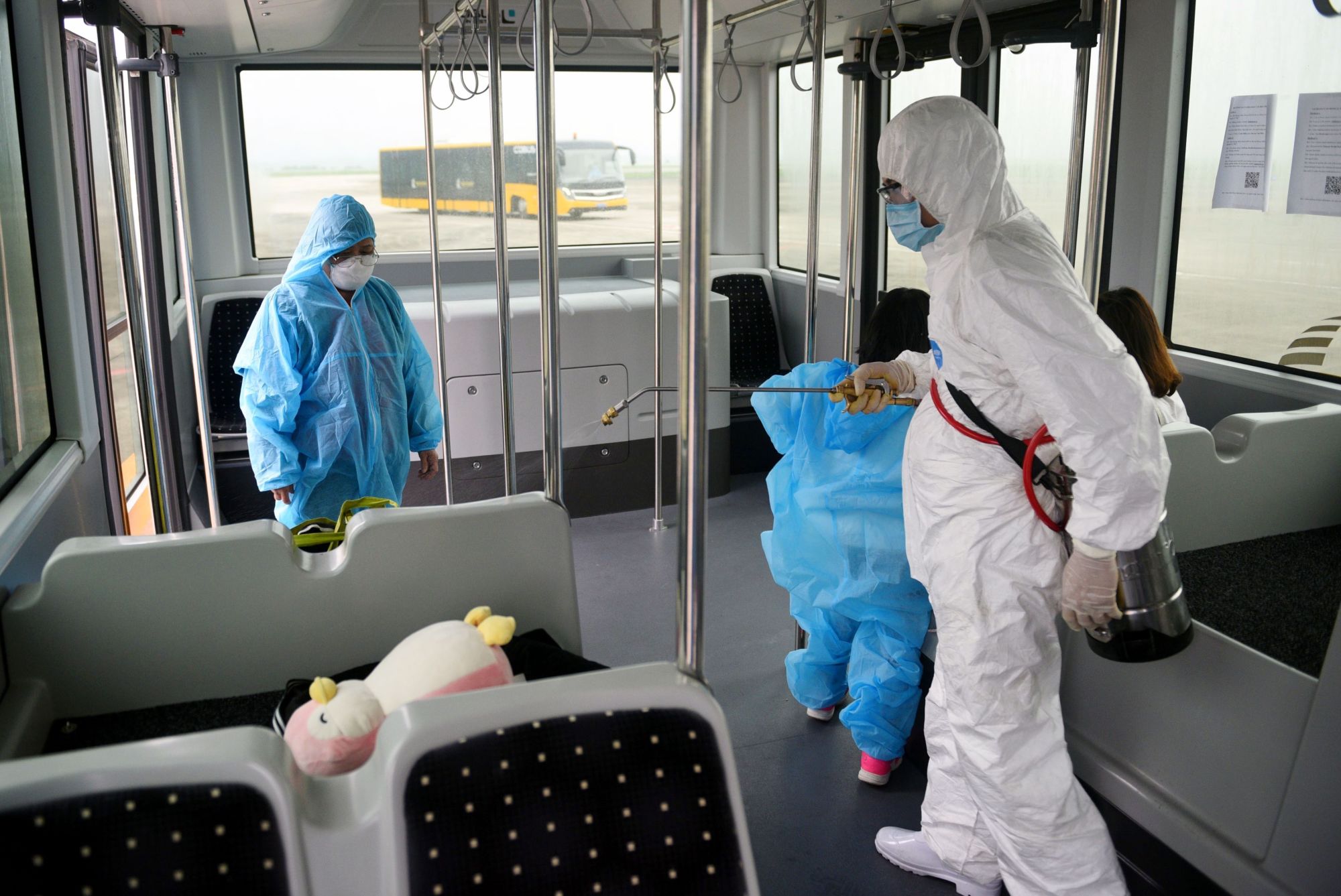
Those who stay when everyone leaves
According to the Health Ministry, people working at border gate areas are among those having the highest risk of contracting the coronavirus.
29 rescue flights have landed in Van Don airport carrying 4,400 Vietnamese citizens.
At Van Don airport, when passengers leave a rescuing flight, the International Health Quarantine Centre works with relevant units to carry out medical checks and screening tests to detect suspicious cases, which will be immediately taken to the district’s medical centre for quarantine. The other passengers will proceed to the area for entry procedures before going to quarantine facilities arranged by the local Military High Command.
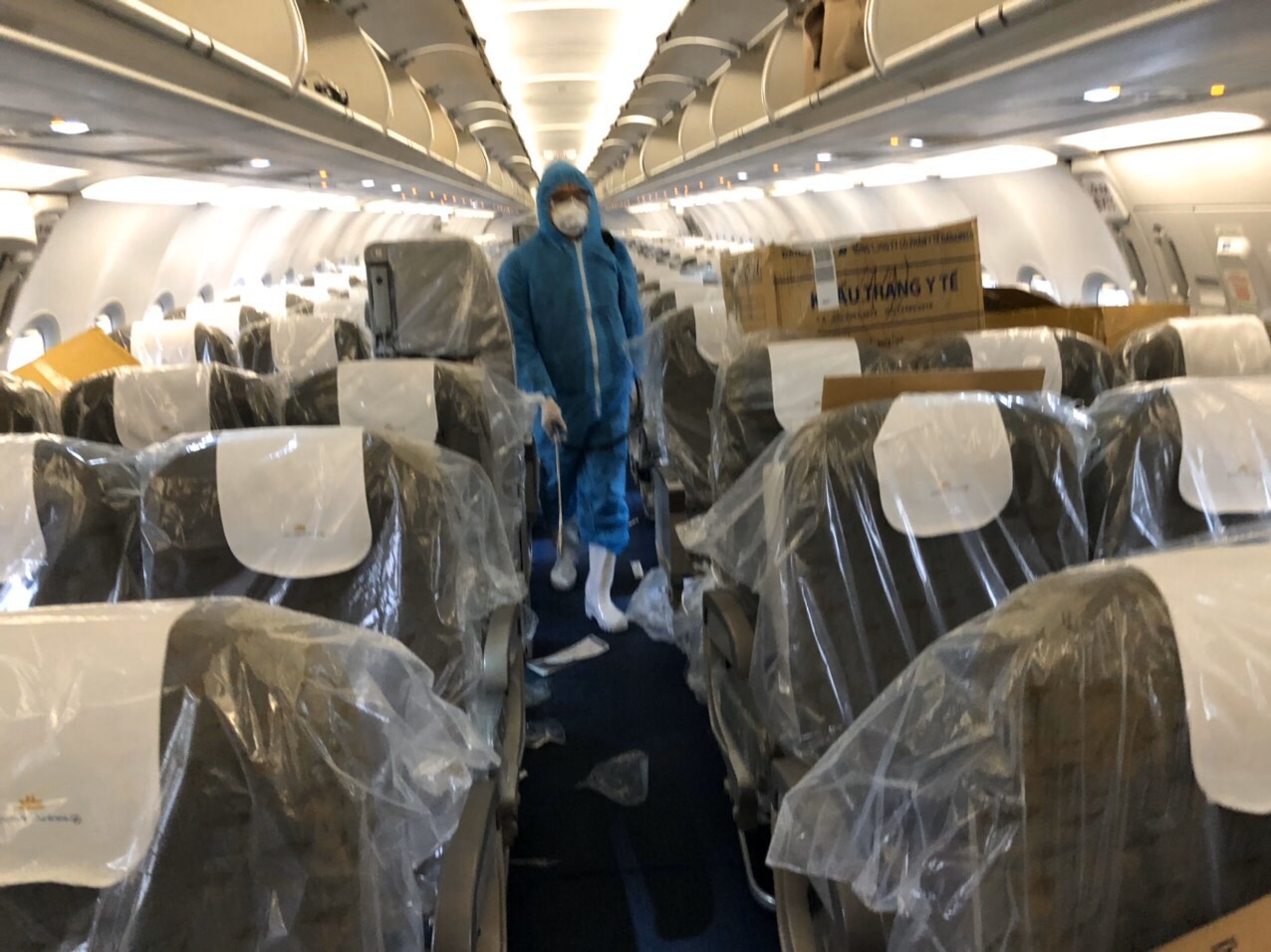
“Receiving a rescue flight is meaningful to me, despite the fact that we often joke that we are now F1 (those who have had close contact with infected people or are suspected of being infected) and our quarantine time keeps getting longer,” Quy said.
When the rescue plane lands, all customs and health quarantine staff have to work intensively. They are the first to interact with the passengers and the last to stay at the airport for the disinfection mission.
“Receiving a rescue flight is meaningful to me, despite the fact that we often make joke that we are now F1 (those who have had close contact with infected people or are suspected of being infected) and our quarantine time keeps getting longer.”
The end of the fight against the disease remains uncertain. Health quarantine ‘fighters’ still face long nights of pressure and a high risk of infection when rescue flights arrive at home. However, that won’t stop them from joining the national concerted efforts to win the battle./.
